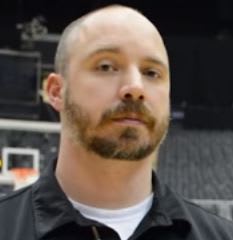Arguably the most commonly used phrase among sports fans is simply, "What if?"
It's no different for Kansas State football fans. There are so many moments than could have gone differently - good and bad - and possibly altered the course of Wildcat football.
We continue our off-season series of K-State "What Ifs," at KSO by looking back at a forgotten potential star at quarterback in the mid-1990s.
What happened: After the 1994 season Kansas State signed Cody Lee Smith, the No. 2 rated junior college quarterback in the nation. Smith, a 6-foot-3, 240-pound pocket passer, had NFL ability in the eyes of many but never played a snap at K-State after developing a rare stomach virus, which made getting on the field impossible.
What it caused: Smith's inability to play in 1995 allowed Matt Miller to quarterback the Wildcats that season and then Brian Kavanaugh to take over the reigns in 1996. To be fair, both could have still won their roles even if Smith was healthy, but the heralded juco transfer wasn't brought in simply to provide depth. He would have been an option at the position.
It also left K-State lacking some depth at quarterback through this period, helping lead to the need to sign another junior college quarterback before the 1997 season.
But what if... Cody Lee Smith became healthy enough to play before the 1996 season?
Smith was initially misdiagnosed before the 1995 season, and therefore made little progress battling his illness.
Eventually Bill Snyder got Smith into the Mayo Clinic, where he was learned to have Rumination Syndrome, which caused Smith to vomit as many as 35 times a day. A well-written story from the LA Times explains the situation in great detail.
Even after nailing down the problem, Smith wasn't fortunate enough to make the progress needed to play. But, what if he had?
For the purposes of this, let's assume Smith still would have been a junior entering 1996 after missing all of the 1995 season. With no disrespect intended to Kavanaugh, who helped lead the Wildcats to a nine-win season and Cotton Bowl berth, a healthy Smith would have been the favorite to lock down K-State's quarterback job.
The first question is simply how much better could K-State have been with Smith at quarterback? Would he have been enough to make the difference in 12-0 loss at Colorado or a 19-15 loss to BYU in the Cotton Bowl? Winning either of those games would have given the Wildcats 10 wins and a Top 10 final ranking. It's hard to tell, but Smith's arm-strength may have provided some of the explosiveness the Wildcat offense missed in 1996.
Now, let's get crazy.
Assume Smith was the starter in 1996, K-State won 10 games and finished in the Top 10. The Wildcats signed a high school prospect named Jonathan Beasley heading into 1996, who had to play as a true freshman due to lack of quarterback depth. With Smith and Kavanaugh, Beasley could have redshirted and gone into 1997 as a redshirt freshman.
With a returning starter in Smith and talented redshirt freshman in Beasley, K-State wouldn't have gone digging for a junior college signal caller prior to 1997. That, of course, means no Michael Bishop.
Smith's story is a sad one, and one can only wonder what the Wildcats could have accomplished with him under center in the mid-90s.
The impact Bishop had, however, is impossible to argue with.
This is an example of how these "What Ifs..." can certainly work out in countless different ways.
Perhaps some of K-State's greatest football accomplishments were fueled by setbacks, even if we don't know it.
***Subscribe to K-StateOnline by clicking here***
Talk K-State football and basketball in the largest, most active K-State message board community anywhere, The Foundation.
